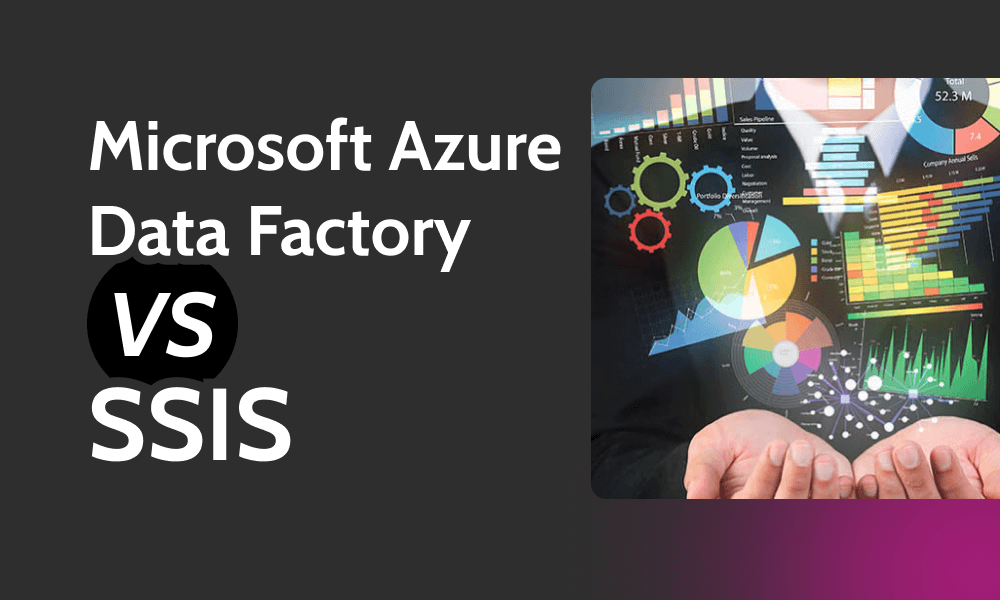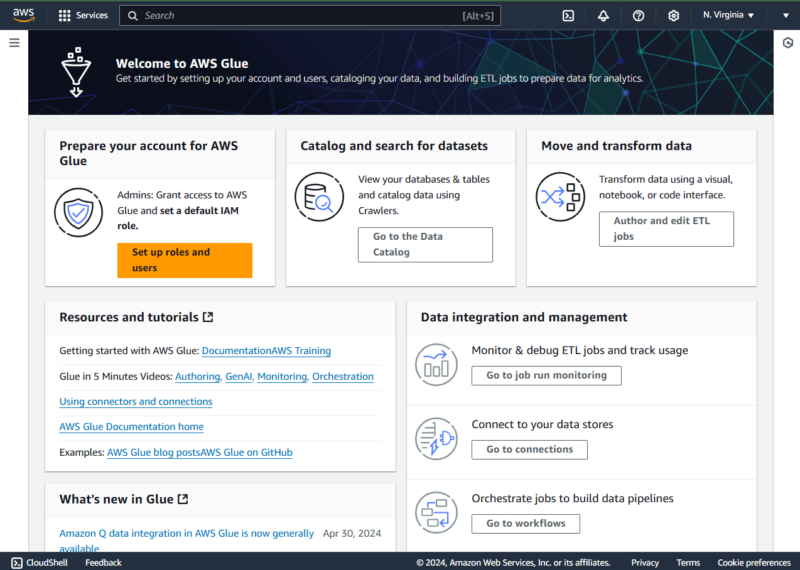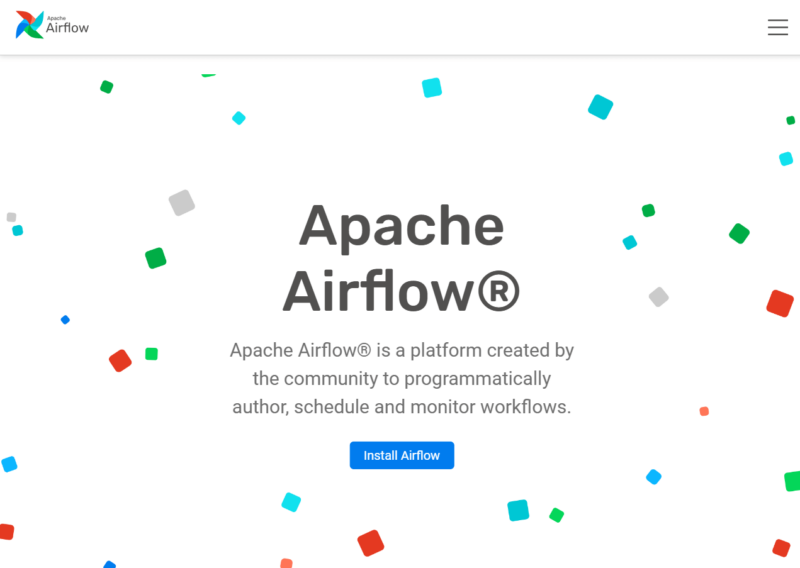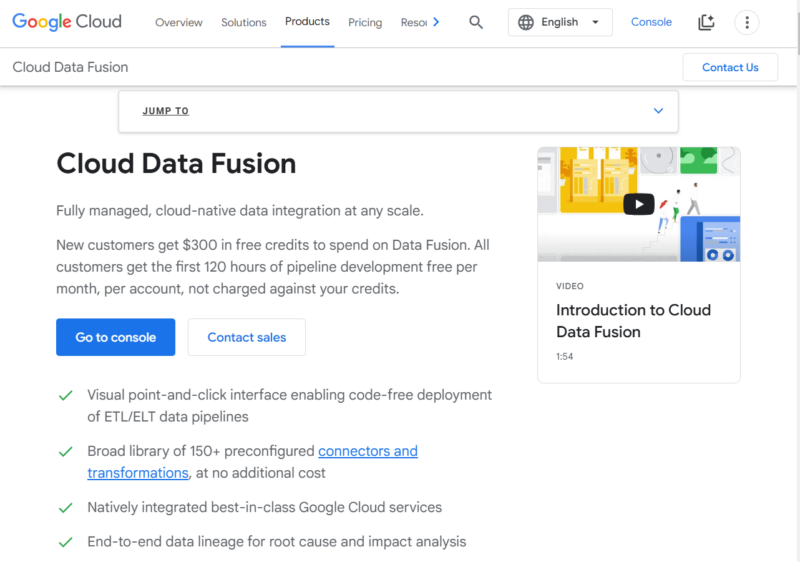When comparing Microsoft Azure Data Factory vs SSIS (SQL Server Integration Services), you’ll see that both data extraction and transformation tools have a lot in common. However, they differ in terms of infrastructure requirements, costs, scalability and some other features.
Azure Data Factory is a fully managed, scalable, cloud-native data integration service designed to automate and orchestrate data pipelines. SQL Server Integration Services (SSIS) is an on-premises data extraction, transformation and loading tool used primarily for structured data.
The table below highlights the differences between Azure Data Factory and SSIS:
| Factor | Azure Data Factory | SSIS |
|---|---|---|
| Overview | Cloud-based data integration and ETL tool suited for pipeline automation | Highly customizable on-premises ETL tool suited for advanced data transformations |
| Performance | Better performance, with larger data sources | Comparable performance for regular-sized files or data sources |
| Security | Benefits from Microsoft Azure’s robust security | Security depends on your on-premises infrastructure |
| Scalability | Highly scalable | Limited scalability |
| Type of Data | Structured and unstructured data | Structured data |
| Type of Processing | Batch processing, real-time processing using change data capture (CDC) | Batch processing |
| Data Connectors | More than 90 built-in connectors | Has various connection managers, including ADO, DQS, EXCEL, FLATFILE and FTP |
| Data Integration | Integrates with various Azure Cloud data services | Integrates well with SQL databases |
| Deployment Model | Cloud-based | On-premises |
| Programming Language | Supports Python, PowerShell, .NET and REST | Uses .NET Framework SDK, which includes Visual Basic and C# compilers |
| Development Tools | Azure Cloud | SQL Server |
| Pricing Structure | Pay as you go | Fixed costs (plus maintenance costs) |
What Is Azure Data Factory?
Azure Data Factory is a fully managed, serverless data integration service that facilitates data pipelines across various environments, including in-cloud, on-premises and hybrid. It is used for the automation and orchestration of data pipelines, ETL data processing, and data warehousing.
- Demystify cloud storage terminology and key concepts in plain language
- Discover easy-to-implement techniques to securely backup and sync your data across devices
- Learn money-saving strategies to optimize your cloud storage costs and usage
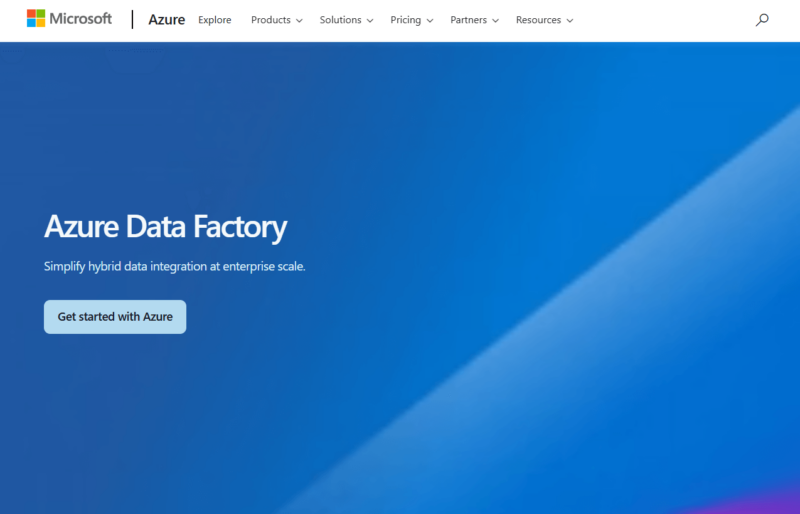
Each Azure data factory is created with a globally unique name.
As a cloud-based service, Azure Data Factory is highly scalable and cost-effective since you pay for only what you use. It integrates readily with many other Azure and Microsoft tools, including Azure Data Lake Storage, Azure SQL Database and SSIS.
What Are the Components of Azure Data Factory?
The components of Azure Data Factory include pipelines, activities, datasets, data flows, linked services and integration runtimes. Each of these components plays a part in the data processing workflows of Azure Data Factory.
The following points highlight the components of Azure Data Factory and what they do:
- Activities: Activities are data processing steps; they include any step in the data processing workflow. There are three types: data migration/movement activities, data transformation activities and data control activities.
- Pipelines: Pipelines are logical groupings of activities, such as a set of activities that work together for a particular outcome. Pipelines can have activities running sequentially or in parallel. In either case, they make for efficient activity management, since you can manage the activities in pipelines in groups.
- Datasets: Datasets are collections of data, the data structure or references to the data you use in your Azure Data Factory activities. They can be input datasets that you feed to the activities, or the outputs you receive from the activities.
- Data flows: Data flows are outlines of the logical path of your data processing steps. They define data processing routines, which Azure Data Factory works with to automatically manage clusters, including spinning them up and down as needed.
- Linked services: Linked services contain information Data Factory needs to connect to external sources, including authentication information such as connection strings. Linked services serve two primary purposes: data store representation and compute resource representation.
- Integration runtime: Integration runtime represents the compute environment in which Data Factory pipelines run. The integration runtime typically tries to execute activities in regions closest to the data store or run compute with the optimal configuration.
What Is SSIS (SQL Server Integration Services)?
SSIS is short for SQL Server Integration Services. It is a Microsoft SQL Server platform designed for various on-premises data processing tasks, particularly to load, transform and extract data.
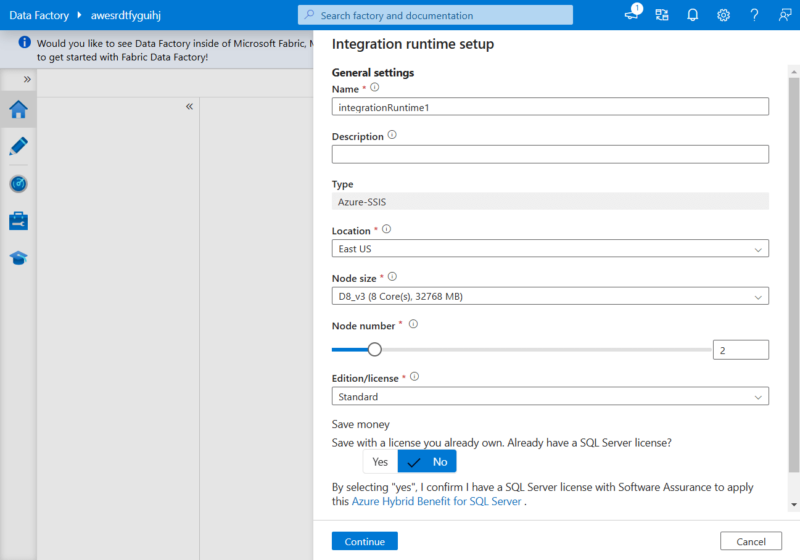
When using SSIS in Azure, you can access discounts with your existing SQL Server license.
Being an on-premises tool, SSIS requires infrastructure management and isn’t very scalable. However, it comes with fixed costs and allows you to customize your ETL pipeline to a very high degree.
What Are the Components of SSIS?
The components of SSIS data flow are sources, transformations and destinations. Each of these components plays a role in data processing, ensuring data is transformed as it crosses from source to store.
The following points describe the components of SSIS:
- Sources: Sources are the components responsible for extracting data from external data sources and availing them to an SSIS data flow. An SSIS data flow can have one source or several. SSIS sources present data as regular outputs and error outputs. Regular outputs contain data columns, which the other data flow components take as inputs. Error outputs contain about the same number of columns as regular outputs, but have two extra columns that contain information about errors.
- Transformations: Transformations modify data, including updating, merging, summarizing and cleaning data. They also include error outputs about data transformations. Like sources, transformations have regular outputs and error outputs, which serve as inputs for the next component in line.
- Destinations: An SSIS destination transfers data from the data flow to data stores. Data stores can be analytic systems or files. An SSIS data flow can have multiple destinations, with each one leading to a separate data store. Like transformations and sources, destinations have regular outputs and error outputs.
What Are the Key Differences Between Azure Data Factory vs SSIS?
The key differences between Azure Data Factory vs SSIS are their deployment model, scalability, level of customization, data type and pricing structure. These differences determine the best use cases for each Microsoft Azure service.
- Deployment model: SSIS is primarily an on-premises tool that can work in hybrid deployments, while Azure Data Factory is a cloud-based tool that is also suited for hybrid deployments. If use-based pricing, scalability and other cloud benefits are essential to your workflow, Azure Data Factory is a better option than SSIS.
- Scalability: As an in-cloud service, Azure Data Factory is connected to the global Azure infrastructure, which consists of a huge number of servers. This means it is highly scalable. SSIS is on-premises, so scalability is limited.
- Level of customization: Azure Data Factory is a fully managed serverless service, so there’s a limit to how much you can customize. SSIS offers a higher level of customization.
- Data type: SSIS is one of several SQL Server data tools. It may come as no surprise to learn it works only on structured data. Azure Data Factory, on the other hand, works on both structured and unstructured data.
- Pricing: Since SSIS is an on-premises tool, it typically has a fixed cost. However, in addition to the cost of acquiring the tool itself, you may incur management costs. Azure Data Factory uses pay-as-you-go pricing, which is the default in Azure Cloud.
- Integration sources: Azure Data Factory integrates with various integration sources, including SQL Server, Oracle, Azure SQL Database, Azure Synapse Analytics and Azure Data Lake Storage. SSIS integrates with fewer services than Data Factory. Some of its integrations include flat files like CSV and TXT files and relational databases like MySQL and SQL Server.
What Are the Advantages of Azure Data Factory Over SSIS?
The advantages of Azure Data Factory over SSIS include scalability, a broader range of integration sources, cost-effectiveness, no maintenance costs, security, cloud integration and automation.
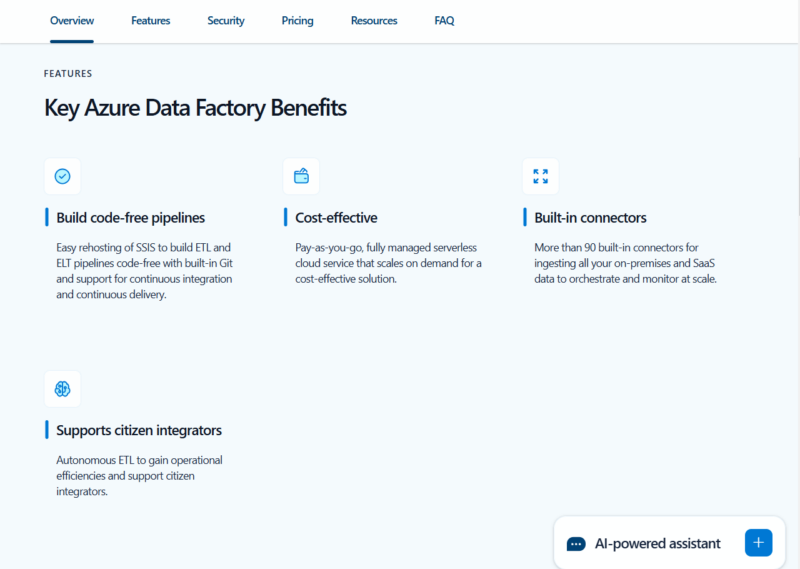
Being in-cloud and fully managed, Azure Data Factory comes with no maintenance costs.
Since it is based in Azure Cloud, Azure Data Factory benefits from Azure’s robust security while integrating seamlessly with other Azure services. Data Factory is a managed, serverless service, so it comes with no maintenance costs — you primarily pay for what you use. Additionally, it scales better than SSIS.
What Are the Advantages of SSIS Over Azure Data Factory?
The advantages of SSIS over Azure Data Factory include its high level of customization, full infrastructure control, tight SQL integration, long-term cost effectiveness and advanced transformation.
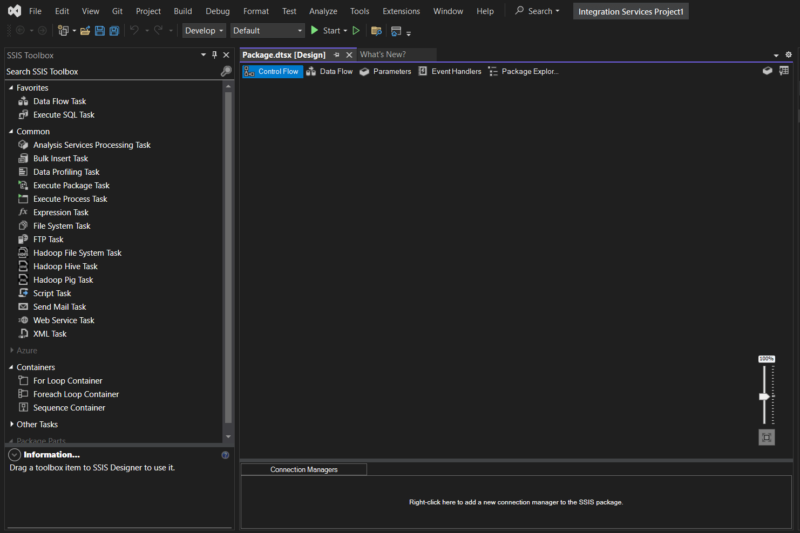
In addition to its common tasks, SSIS allows you to create custom tasks using
a COM-supported programming language.
SSIS allows you to create custom components, making for a highly customizable data flow. Since it is an on-premises tool, you have complete control of its workings. In addition, as part of the Microsoft SQL Server database software, SSIS couples tightly with SQL databases.
Additionally, SSIS may be more cost-effective than Azure Data Factory in the long run, particularly if you conduct a significant amount of complex ETL data processing. It is also more suited for advanced data transformations.
What Are Some Alternatives to Azure Data Factory and SSIS?
Alternatives to Azure Data Factory include AWS Glue, Apache Airflow and Google Cloud Data Fusion. Like Azure Data Factory, these are data integration ETL tools with varying best use cases.
Final Thoughts
Azure Data Factory’s cloud nativity gives it the upper hand over SSIS when it comes to scalability, cloud integration and security. However, when it comes to the transformation of data with a complex structure and highly customizable workflows, SSIS triumphs.
Considering the potential for savings in the long run, would you opt for SSIS over ADF? How would you scale SSIS if you ran it on-premises? Let us know your thoughts in the comment section below. As always, thank you for reading.
FAQ: SSIS vs Azure Data Factory
-
SSIS is better than ADF when you want extensive customization and total control of your infrastructure. However, ADF is better than SSIS when it comes to scalability, cloud integration and the number of integration sources.
-
Azure supports SSIS. You can run SSIS in Azure SQL Database or Azure SQL Managed Instance using the Azure-SSIS integration runtime.
-
The alternative to SSIS in Azure is Azure Data Factory.

